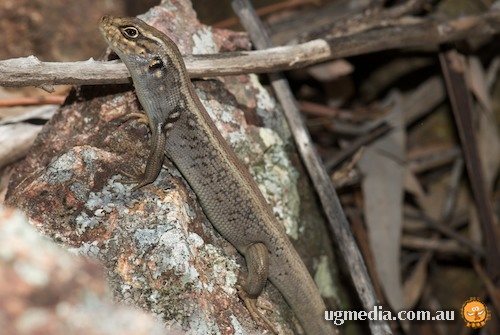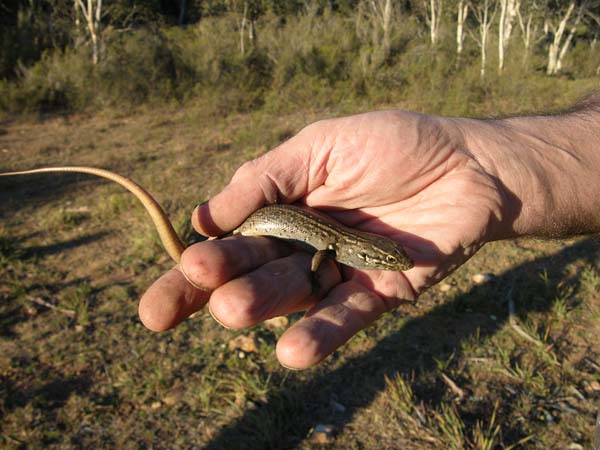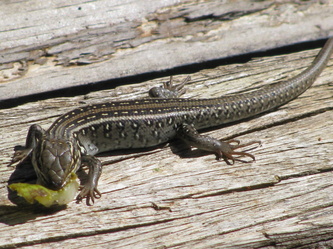Post by Ceratodromeus on Jan 18, 2016 0:01:24 GMT 5

Scientific classification
Kingdom: Animalia
Phylum: Chordata
Class: Reptilia
Order: Squamata
Family: Scincidae
Genus: Egernia
Species: E. whitii
Description
This is a small species of Egernia, with adults ranging from 80-110mm(3.1-4.3in) in snout-vent length{1}, with a tail that is correspondingly long- measuring 160mm(6.2in) on average; Skinks of the venue Egernia have rather long tails that measure anywhere from 1-1.5 times their snout vent length. Sexual dimorphism is present within the species, with females attaining larger body sizes then the males. However, proportionately, males had larger heads{2}. The coloration of the skink is earth tone - dull colorations that help the lizard blend into its habitat. The back is a bronze color, with two parallel lines running from the nape of the lizard's neck to the vent. These stripes contain small white circles; a feature which is also prominent in the ski nk's sides. The head is stout and possesses characteristic striping that runs from the snout to behind the eye. Body coloration varies throughout this skink's range, wit three color forms being recognized the patterned, all black, and patternless.{2} Aside from diffent color patterns, all three forms are morphologically identical.

Geographic range
This lizard can be found throughout South Eastern Australia, where it inhabits a variety of habitats - from coastal heaths to dry sclerrophyl forests.

Dietary habits
White's skink is an insectivore, who's diet consists of coleopterans,hemipterans,and arachnids. Predatory feeding behaviors documented for this skink show that it seizes prey by the head, and rubs them against rocks to dispatch them.{1} plant matter has been documented as being ingested, but is not considered as a significant portion of the lizard's diet.

Social behaviors
Skinks of the genus Egernia have been well documented to behave sociallsz and white's skink is no different. Social groups range from 3-6 individuals, and typically contain two adult individuals and 2-4 juveniles. While it is true some groups are directly related(parents & offspring), individuals of other ancestry can be found grouped together basking on large rocks{3}.
Reproduction
These lizards are viviparous, meaning they give birth to fully developed young. Litter size can be anywhere from 1-4 young. Mating occurs from September to October, with females giving birth in January or February. {1}

References
{1} Chapple, David G. "Ecology, life-history, and behavior in the Australian scincid genus Egernia, with comments on the evolution of complex sociality in lizards." Herpetological Monographs 17.1 (2003): 145-180.
{2}Chapple, David G. "Life history and reproductive ecology of White's skink, Egernia whitii." Australian Journal of Zoology 53.6 (2006): 353-360.
{3}Chapple, David G., and J. Scott Keogh. "Group structure and stability in social aggregations of White's skink, Egernia whitii." Ethology 112.3 (2006): 247-257.


